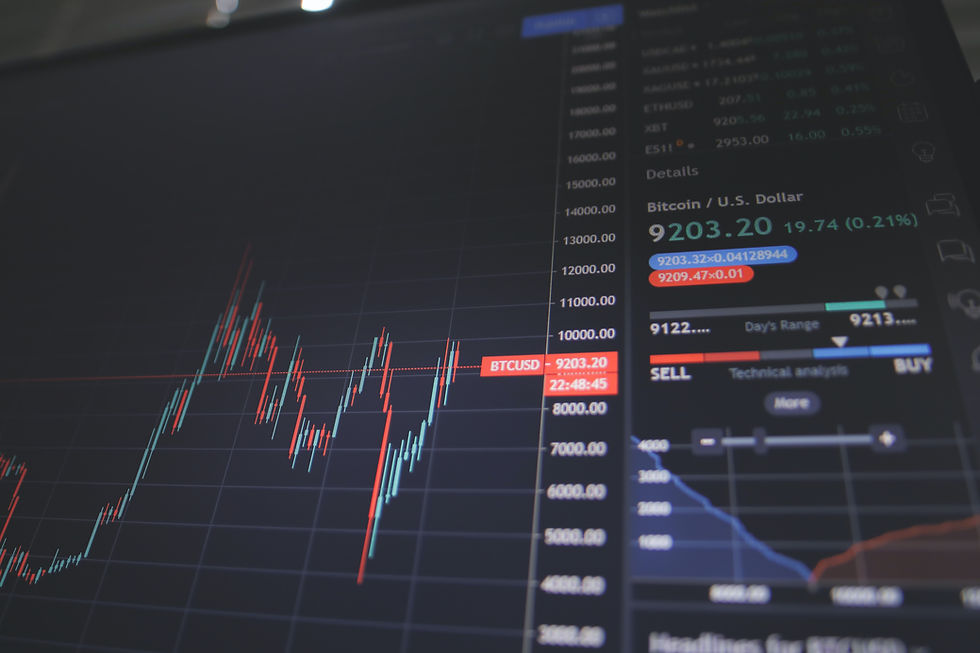
26 Sept 2022
Global Macro-economic and Geo-political Update
Given the recent market downturn we thought it important to provide some explanatory comments.
Equilibrium - Interest rates and inflation
Volatility in financial markets will continue until an “equilibrium” level is reached between interest rates and inflation. By equilibrium we mean equity prices will fall while interest rates will rise until they are close to being equal. At the moment the cash rate is 2.35% and CPI inflation is 6.1% which means a negative yield of 3.75%. This gap is still too wide and strictly speaking interest rates should be greater than inflation so that depositors earn a real return. As monetary policy, unlike fiscal policy takes time to work, the challenge for the RBA and all central bankers is to balance out the interest rate rises so as not to crash the economy. This is a very difficult task which needs to be co-ordinated with fiscal policy.
Monetary policy is working
We are already starting to see changes in demand which will relieve supply chain pressures. For example, our mortgage broking business 6 months ago was finding that the banks were not “picking up” loan applications until 5-10 business days after the application was submitted. The banks imposed timeframes as they were being swamped with mortgage applications which they were struggling to process. Our most recent loan application was “picked up” the day it was lodged. This is a clear signal that the heat has gone out of the property market. Another indicator is the time a property is on the market. This time is increasing as buyers are waiting because of the uncertainty on how high interest rates will go up as folks want certainty on their repayment amount. Existing mortgage holders have seen their repayments double since February which reduces their disposable income. Therefore, in time these folks will start more aggressive budgeting because their mortgage repayments now make up a greater percentage of their take home pay (after tax).
Ride the downturn out
Now is not the time to sell.
Your portfolios are comprised of Managed Funds, Exchange Traded Funds (ETFs) and/or some direct shares. Diversity is a deliberate risk management strategy as managed funds and ETFs are investment vehicles containing a portfolio of shares rather than a specific share. This means if the general market or index falls, as is the current situation, then your portfolio also falls by a similar amount. In time, as the market recovers so will your portfolio. Some managed funds and ETFs you hold will recover faster/slower than the general market.
If you hold a specific share and it falls in value by 50% that means it must go up by 100% to get back to the pre-market correction price. This is very unlikely to occur with AMP (was $16 now $1.11), Telstra (T2 was $7.60 now $3.76) and Perpetual (was $80.91 now $23.75) being good examples where their share price will never recover to their pre-float and/or market highs. Whereas, with a managed fund or ETF, if a specific share in the portfolio crashes, it can be exited without necessarily impacting the overall portfolio.
History - A guide to the future
After the 2007/08 crash it took the S&P 500 index 4.5 years to get back to its pre-crash levels. It took the ASX 200 index 13 years to do so. The difference can be explained by an examination of the indices, i.e., the companies and the sectors those companies operate in of both indices. The S&P 500 is dominated by technology companies, e.g., Google, Apple, Microsoft which today continue to have fantastic free cash flows but pay low levels of dividends (low yields), whereas the ASX 200 is dominated by banks, e.g., CBA, Westpac, and miners, e.g., BHP, Rio Tinto. These companies have oligopoly businesses that are Federal Government guaranteed or are major international companies. All of which pay high levels of dividends with franking credits attached. It is important to understand that equity yields tend to remain about the same regardless of the economy, and in the case of the ASX200 this means the yield should continue to be around 4% plus franking credits.
As outlined above selling now will realise losses which does not make sense. We advise to hold and ride it through as time in the market rather than attempting to time the market in the long run pays off.
If you have any questions, please feel free to contact us.
General Advice Warning: The purpose of this newsletter is to provide general information only and the contents do not purport to provide personal financial advice. It does not take your specific needs or circumstances into consideration, so you should look at your own financial position, objectives and requirements and seek financial advice before making any financial decisions